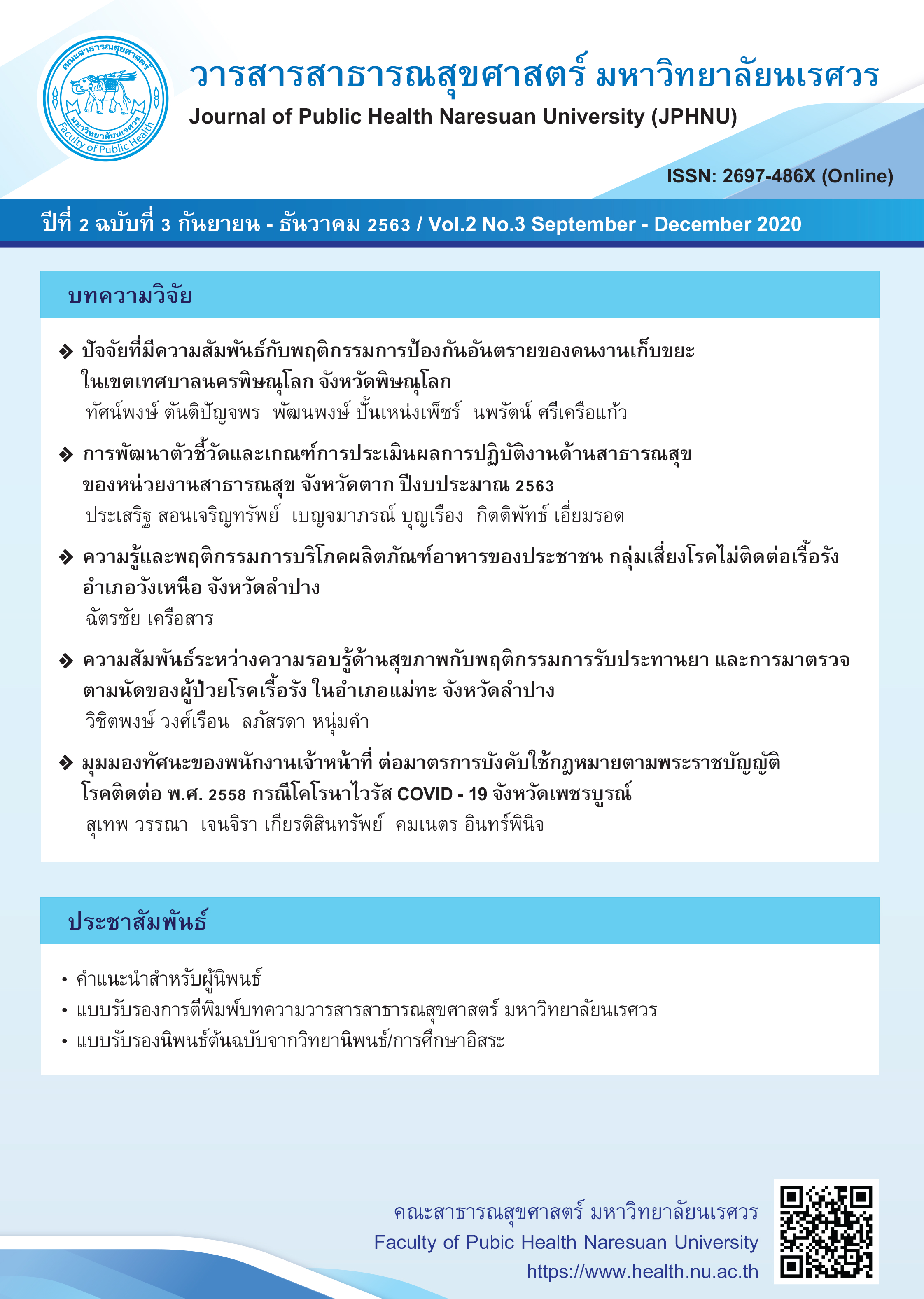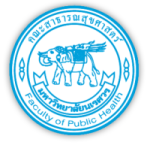Knowledge and behavior of food product consumption among people who were at risk of chronic non-communicable diseases in Wang Nuea District, Lampang Province
Keywords:
Consumption, Nutrition label, Food products, Chronic non-communicable diseasesAbstract
This survey research aimed to study the knowledge of food product consumption, food consumption
behavior, and reading nutrition labels among people who were at risk of chronic non-communicable
diseases. The sample consisted of 387 people, between the ages of 35-59 years who were selected
by a simple random sampling method from April to June 2020. The research instrument was a 3-part
questionnaire that comprised knowledge and food consumption behavior and reading of nutrition labels/
food product labels based on the Consumer Potential Development Division, Food, and Drug Administration,
Ministry of Public Health. Statistics used for data analysis included mean, percentage, standard deviation,
and Pearson product-moment correlation coefficient.
The results showed that 36.8 percent of the sample had a high level of knowledge of food consumption. The most correctly answered list was that grilled food, such as grilled chicken, grilled pork ball, grilled pork, should not be eaten because it contains carcinogens. Sixty-two-point eight percent of the sample had a high level of dietary behavior. The most average behavioral score was that you choose to buy instant or semi-finished food products with the food serial number (FDA symbol). Knowledge of food product consumption was positively statistically significant related to food consumption behaviorat a low level (r = 0.22, p-value < 0.001).
This research suggests that educating on food consumption and reading nutrition labels helps to promote better dietary habits.
References
Aekplakorn, W. (2014). Report of Thai public health survey by physical examination No. 5, 2014. Nonthaburi: Health systems research institute. (in Thai)
Bureau of Nutrition. (2013). Food standards for alternative health for risk groups diabetics and hypertension. Samut Sakhon: Born to be publishing Co., Ltd. (in Thai)
Division of Non-communicable Diseases. (2017). Thailand National NCD plan 2017-2021. Bangkok: Emotion Art Co., Ltd. (in Thai)
Lampang health data center. (2019, September 30). Populations 35 years and older who are screened for diabetes. Retrieved December 10, 2019, from https://lpg.hdc.moph.go.th/hdc/reports/report.php?source=pformated/format1. (in Thai)
Lertwut, L. (2015). Factors related to behavior in health products purchasing and consuming of people in Chachoengsao Province. FDA Journal, 21(3), 12-21. (in Thai)
Public & Consumer Affairs Division, The Food and Drug Administration (Thai FDA). (2019). Report on survey of knowledge and consumption behavior of public health products in the target community of the project in 25 provinces Operated under the Community Joint Network Project Prevent threats, health products, fiscal year 2019. Nonthaburi: Thai FDA. (in Thai)
Phokhang-Just, W., Sarakshetrin, A., & Chantra, R. (2015). Knowledge, attitude, and practice towards nutrition and nutrition lebels of nursing students at Boromarajonani College of Nursing, Surat-Thani. Journal of The Royal Thai Army Nurses, 16(1), 93-100. (in Thai)
Singhirannusorn, C., Arunmuang, A. (2013). Dietary supplement product consumption behavior of secondary school students under supervision region 2 of Ministry of Public Health. FDA Journal, 20(1), 38-47. (in Thai)
The Food and Drug Administration (Thai FDA). (2017). Effect of the implementation of a nutrition label use promotion program on the nutrition labels knowledge, attitudes, and use of communities Fiscal year 2017. Nonthaburi: Thai FDA. (in Thai)
Downloads
Published
How to Cite
Issue
Section
License
The published article is copyrighted by the Journal of Public Health and Health Sciences Research.
The statements that appear in each article in this academic and research journal are the personal opinions of each author and are not related to Naresuan University and other faculty members in the university. Responsibilities regarding each article are the responsibility of each author.






